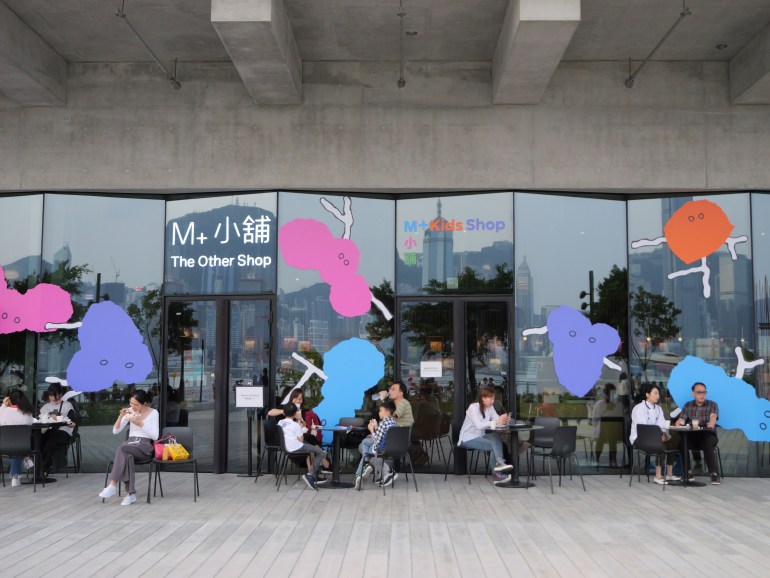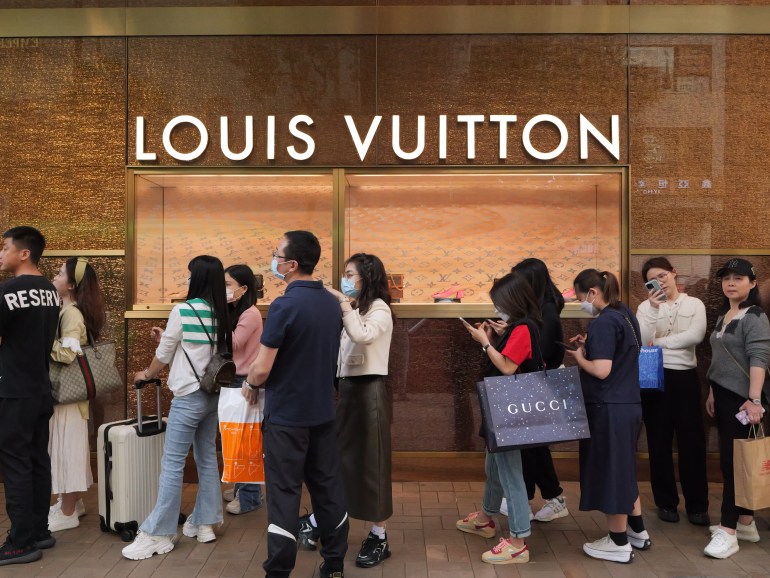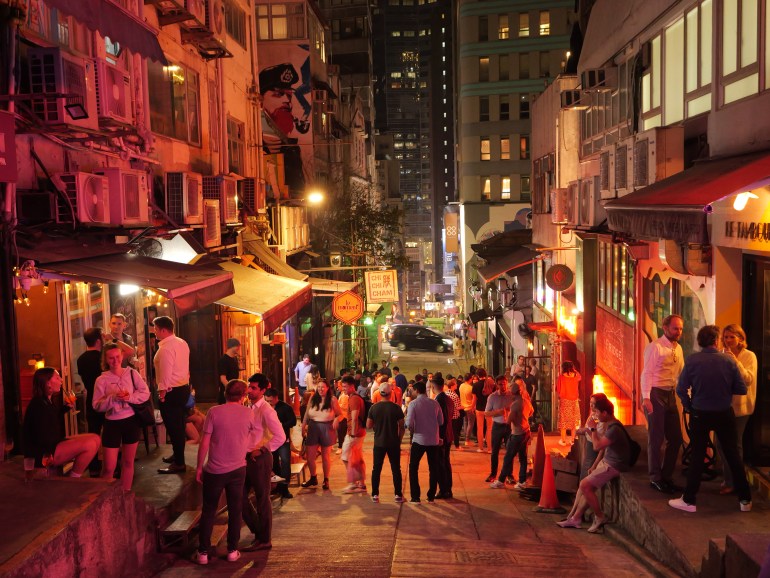Hong Kong was in the throes of the pandemic’s “fifth wave” and sending patients who tested positive to a quarantine centre for up to 21 days.
“That was the tipping point,” Bruce, 65, a businessman and native of Scotland who has lived in Hong Kong for 35 years, told Al Jazeera.
He was concerned that the city’s strict measures could prevent his 18-year-old son from departing to begin a summer student program in the United States.
“We had to fly him out of Hong Kong as soon as possible,” he said.
Bruce joined his son several weeks later and ultimately stayed away from Hong Kong for nearly three months.
Like Bruce, thousands of other Hong Kong residents left the semi-autonomous Chinese territory during the peak of the pandemic – some temporarily, others permanently – as the government’s tough restrictions took their toll on both expats and locals who were able to relocate overseas.
Last year, the city’s population declined for the third consecutive year – down 0.9 percent to 7.3 million – as tens of thousands of residents moved away permanently. As well as frustration over pandemic measures, many residents were driven to leave by a sweeping national security law that was implemented after pro-democracy protests in 2019 that often turned violent.

Hong Kong officials have openly expressed concern about the brain drain from the city, which for decades has had a reputation as one of Asia’s most cosmopolitan urban centres. Foreign visitors, meanwhile, were mostly barred from entering Hong Kong during the pandemic.
Now, the city long marketed as “Asia’s World City” is making an all-out effort to lure business people and tourists back, after being largely closed off to the world for nearly three years.
In February, the government unveiled a giveaway for half a million airline tickets to bring in visitors. Earlier this month, authorities lifted the last of the pandemic restrictions: mandatory face masks, which had been an obstacle for many potential travellers even though airlines began increasing flights to the city late last year.
The question now: Will they come?
Hong Kong remains a popular tourist spot and pent-up demand could see an influx of visitors. On a recent sunny Saturday afternoon, busloads of tourists from mainland China descended on Hong Kong’s harbour-front parks and cultural districts.
Still, arrivals are a fraction of pre-pandemic levels. Although visitors hit a nearly three-year high of about 500,000 in January, the most recent available figures, the city welcomed some 6.8 million arrivals in January 2019.
The Hong Kong Convention and Exhibition Centre, which traditionally hosts some of the city’s biggest trade shows, has been virtually empty over the past few years.
Now that the city has reopened, the convention centre marked its first full house since the start of the pandemic for a pair of jewellery and gem shows earlier this month. In April, it will have a full lineup when it hosts nine events, including shows focusing on innovation, electronics and fashion.

While some companies are expecting the city to bounce back quickly, others say it could take longer.
Cathay Pacific Airways, the city’s flagship carrier, saw flights trickle to just a handful a week during the height of the pandemic. On one day in March last year, it carried just 58 passengers – a low point for an airline with a once-thriving global network that flew tens of thousands of people a day.
Cathay currently is operating at 50 percent of pre-pandemic passenger flight capacity and forecasts that figure to be 70 percent by the end of this year. It does not expect to be at pre-pandemic levels until the end of 2024.
The airline said this month that part of the challenge is training pilots and cabin crew, many of whom left the airline over the past three years. Getting long-parked jets back into operation also will take time.
British Airways is this month doubling its weekly flights between Hong Kong and London to 14 from seven, while United Airlines resumed its first passenger flight from the city, to San Francisco, since the start of the pandemic.
Three major events kicking off towards the end of this month will be another test of the city’s rebound: Art Basel Hong Kong, the Hong Kong International Film Festival and the Hong Kong Rugby Sevens tournament – all of which traditionally draw thousands of foreign visitors but had to cancel events over the past three years.
“The visual art community in Hong Kong is extremely excited about the upcoming Art Basel show in Hong Kong,” Angelle Siyang-Le, the director of Art Basel Hong Kong, told Al Jazeera. In 2019, Art Basel Hong Kong had a record attendance of 88,000 visitors.
She added that the fair has been working closely with the art sector in welcoming an international audience back to Hong Kong.

Meanwhile, the film festival – one of the oldest in Asia – and its related programmes are expected to draw filmmakers and film-industry executives from across Asia and around the world. It canceled its program in 2020 as COVID began spreading across the globe. And while the festival took place the following two years, primarily for local audiences, it still faced challenges.
Albert Lee, the executive director of HKIFF, said that things won’t be back to normal overnight. “It will take time,” Lee told Al Jazeera, “but there certainly is an appetite for film.”
The Rugby Sevens, which normally takes place in the spring, held its first tournament since the pandemic began this past November when social-distancing and other rules were still in effect. The organisers of the event, known as much for its non-stop parties as for the sport itself, have promised to “rock the city” for the first time in four years.
For Bruce, the businessman, it was Hong Kong’s celebrated service-sector efficiency that brought him back.
After spending a few months in the US, the UK and elsewhere last year, travel-related headaches – including flight cancellations and lost luggage – began to take their toll.
“Everything was breaking down,” he said.
Even the prospect of a seven-day quarantine upon arrival wasn’t enough to deter Bruce from returning.
“I’m going back to Hong Kong, where everything works,” he recalled telling himself.
